Animals In Northwestern Coniferous Forest
x Animals That Alive In Coniferous Forests
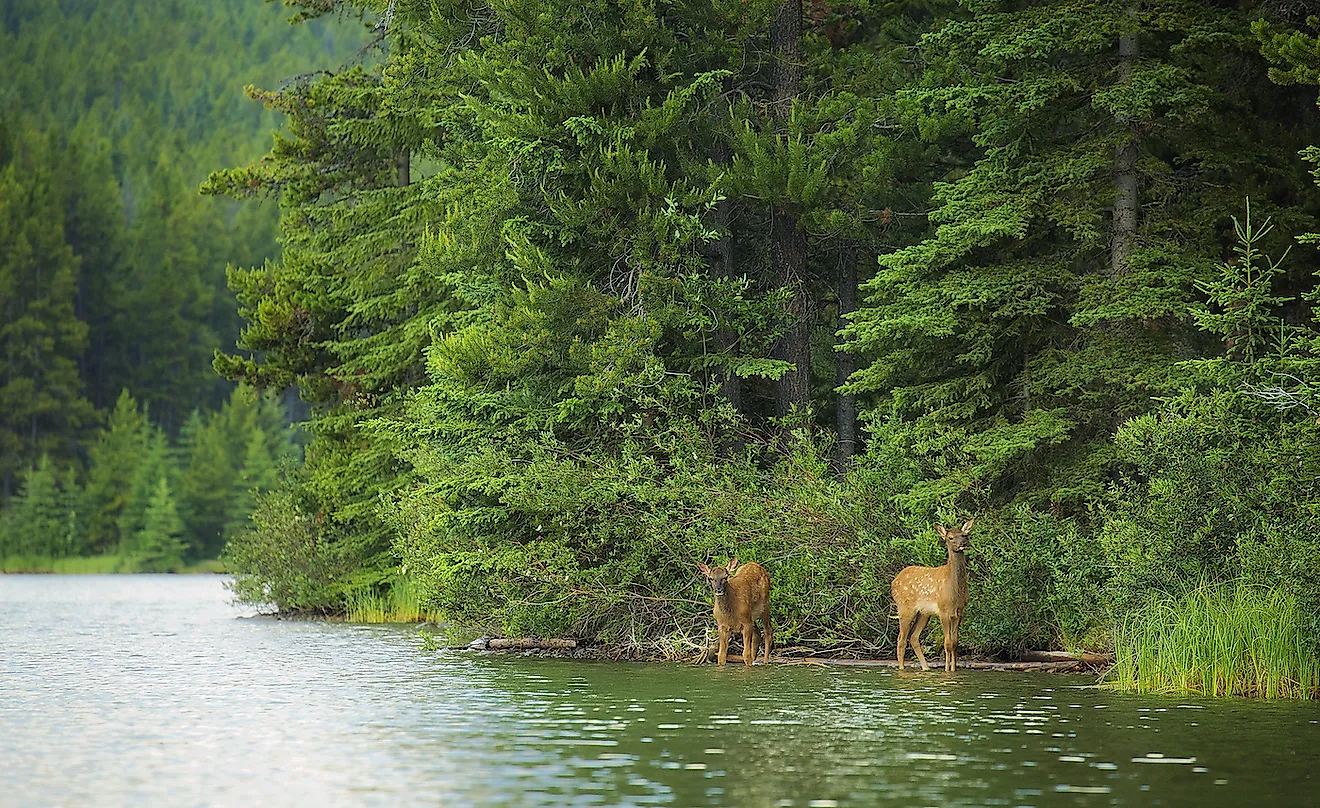
- The boreal forest represents 29% of the world's forest.
- The largest area of wetlands in any ecosystem of the earth is found in the Canadian boreal region with more lakes and rivers than anywhere else.
- Boreal forests are home to 85 species of mammals, 130 species of fish, 32,000 species of insects, and 300 species of birds.
Coniferous woods ecosystems are the largest terrestrial biomes on earth and habitation to a broad variety of animals and plants. The forest includes a collection of evergreen and cone-bearing trees with temperate climate including plenty of precipitation, whether in the grade of rain or snow. Copse plant in the coniferous biome include hemlocks, pines, cedars, redwoods, fir, spruce, and cypress, and they tend to have long lifespans, some for thousands of years.
Many animals brand their dwelling in coniferous forests, some of which have thick fur to insulate them againsts frigid winters, while others hibernate to endure the cold and some migrate to warmer temperatures. A diverseness of mammals and invertebrates, from wolves and bears to large cats, moose, elk, porcupines, deer, squirrels, birds, insects, and snakes are all known to reside in coniferous forest zones.
These are a few of the most prominent animals plant in coniferous forests around the world.
10. Owls
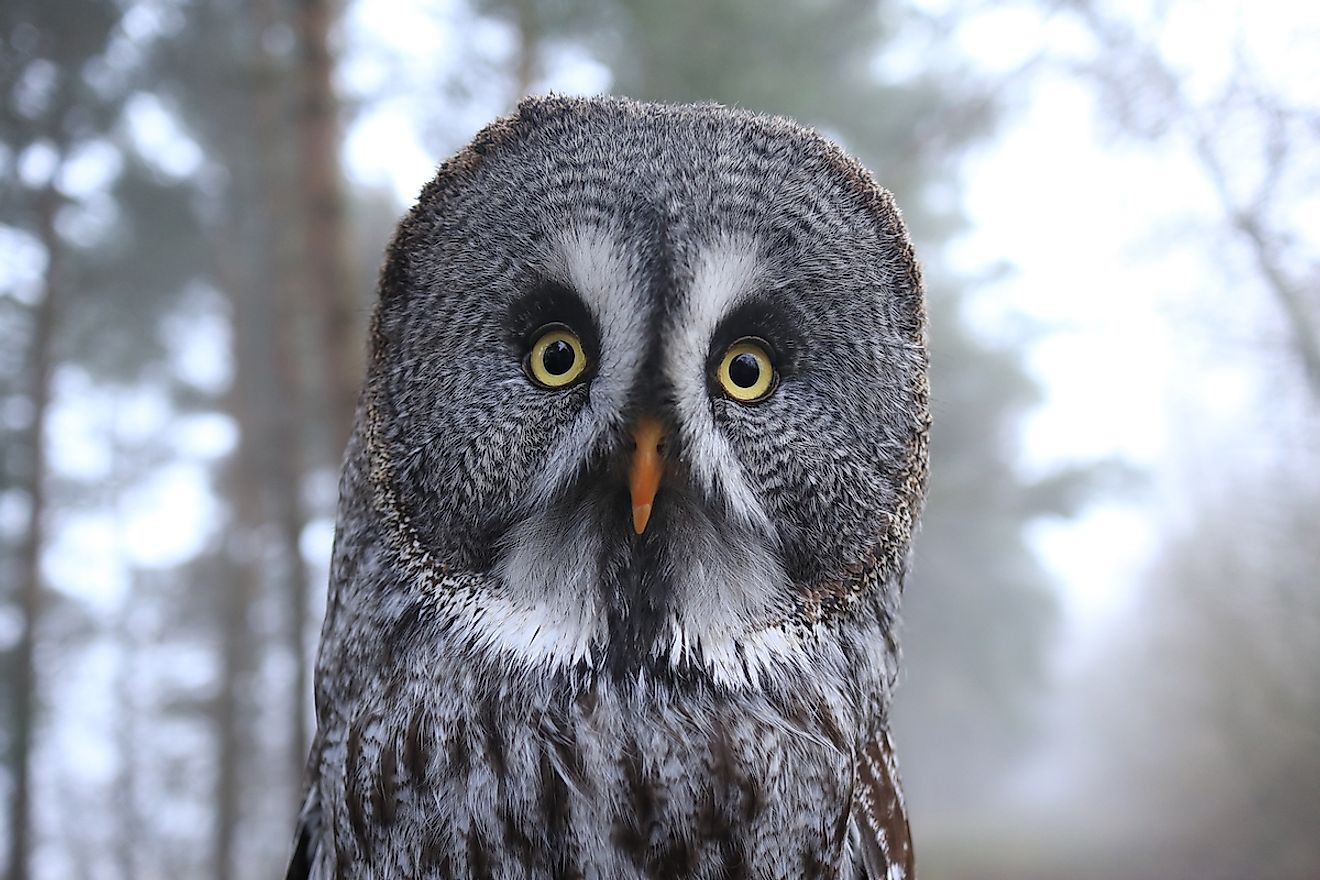
A diverseness of owl species nest in coniferous forests. The great gray owl is ane of the largest species in the world and is found in the Northern Hemisphere. With its big round heard, greyness face and feathers, and yellow eyes framed by dark circles, the great grey owl is singled-out among its aviary counterparts.
Though it is only one-half as heavy as a snowy owl, the swell grey owl gets its reputation for a big stature from its sixty-inch wingspan, information technology'south long tail, and large facial disc. They take a fierce appetite for rodents and volition hunt for and consume upward to ane-third of its body weight each day.
The great grey owl is largely nocturnal, simply may be seen at dusk and dawn, and will exist found hunting during daylight hours in breeding flavor.
Coniferous forests are besides inhabited by the long-eared owl, also a common species in teh Northern Hemisphere. Long-eared owls are found through Europe and North America, and some migrate to Asia to escape harsh winters. It's trademark "ears" are actually tufts of feathers located above its head, giving the owl its unique wait and helping the medium-sized bird to appear larger than information technology is.
The northern spotted owl can also be institute in coniferous wood regions of western Northward America. These birds crave a large amount of land for hunting and nesting.
Afterwards years of being disturbed by logging the population of the spotted owl dwindled and information technology was designated as an endangered species. They are now an indicator species, meaning their presence in a forest is a sign of a healthy ecosystem.
9. Grizzly Comport
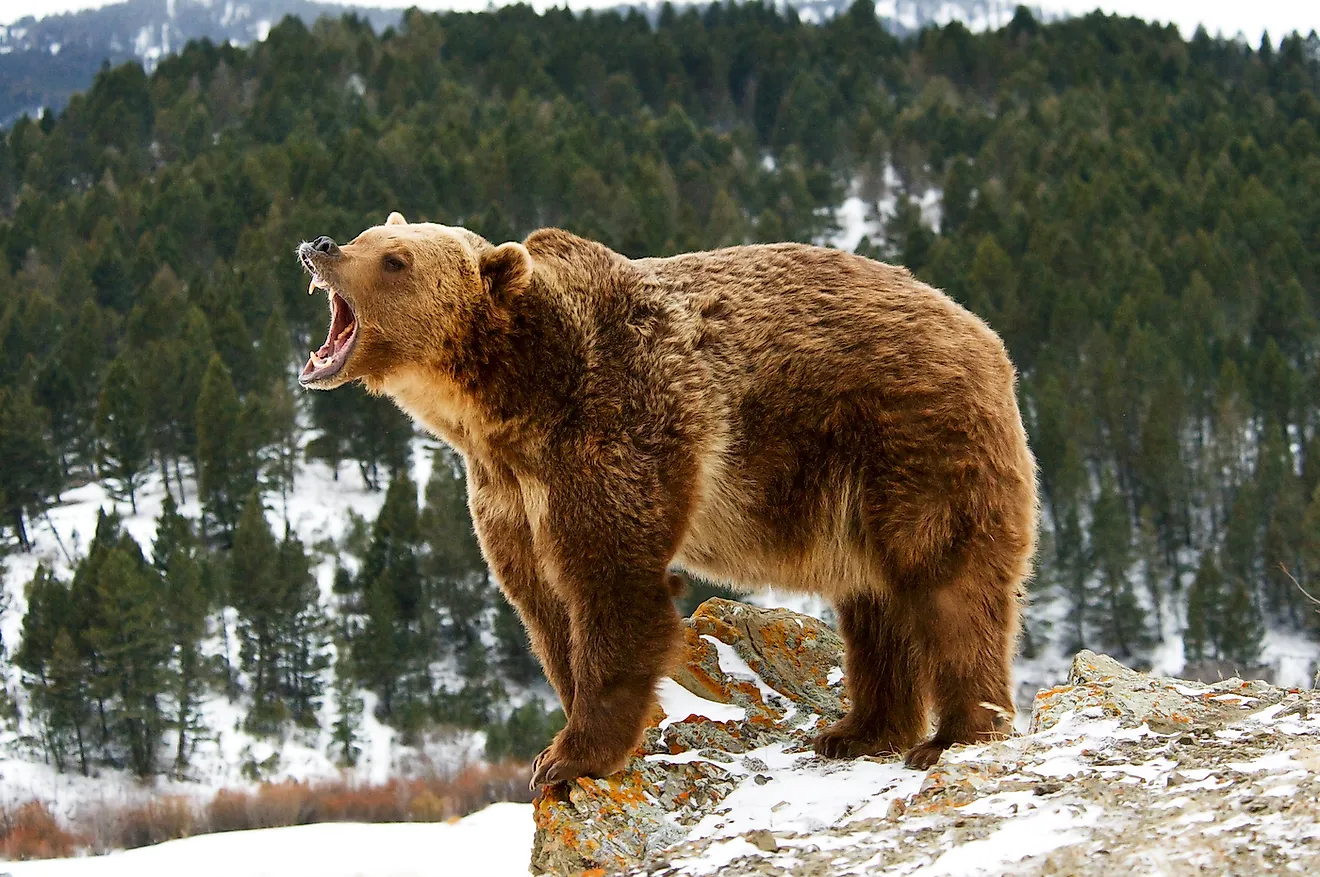
Similar the spotted owl, grizzly bears - ane of the fiercest animals in North America - have been alleged a threatened species in the lower 48 states in America and endangered in Canada.
Grizzly bears boast broad heads, extended jaws, large paws and powerful claws, making the carry capable of conveying large animals like full-grown cattle. They consume insects like ants or bees, seeds, roots, nuts, berries, and salmon - in fact, the grizzly is famous for its fishing capabilities.
Prior to western clearing and settlement, it was estimated near 100,000 grizzly bears lived in Due north America, merely by the 1990s that number had been reduced to fewer than 1,000, and most of those were living in preserves such every bit Yellowstone National Park. They are likewise found in Canada, in British Columbia, Alberta, the Yukon, and the Northwest Territories.
The chief threat to the grizzly bear's status is devastation of its habitat. The animals, which can grow to betwixt 500 to 1,000 pounds, require large spaces to roam and huge amounts of nutrient.
8. Wolverine
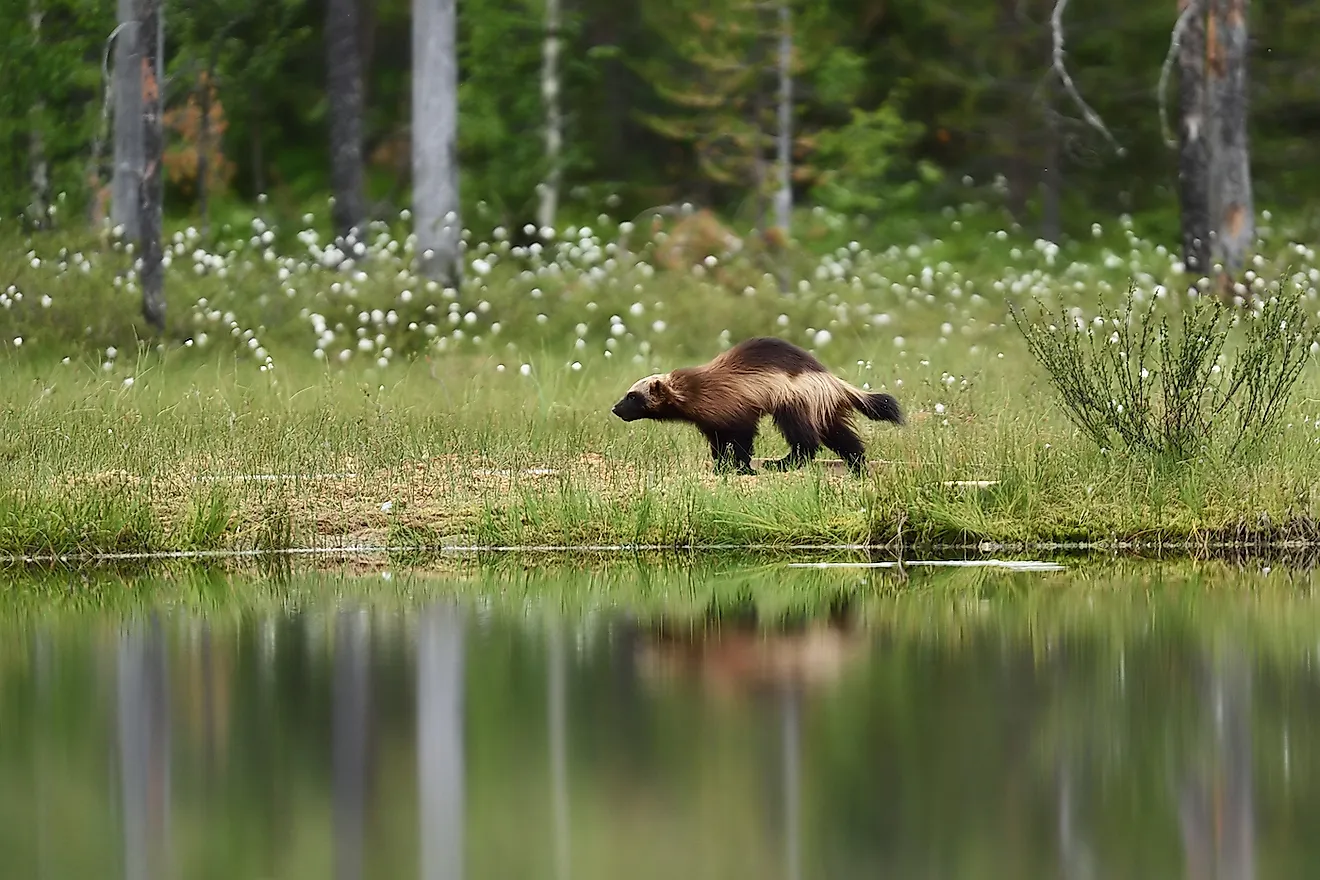
Wolverines are reminiscent of a blend of a canis familiaris, skunk, and bear, with short legs, long hair, and an elongated snout. They wearable a distinctive mask of dark fur effectually the eyes and brow, with a stripe of blond or ivory fur downwards its back from shoulder to tail. Every bit the largest member of the weasel family, wolverines grow to well-nigh four feet long and counterbalance upwardly to xl pounds and are capable of killing and eating an entire deer.
These weasels are omnivores and tend to chase caribou, moose, deer, and mountain goats, as well as smaller animals like squirrels and rodents, birds eggs, and berries. Their preference is for meat, and wolverines will travel upward to 15 miles in a 24-hour catamenia to observe prey, or to feast on the remnants of a dead animal.
Their peachy sense of smell allows the alone animals to hunt in all times of twelvemonth, and wolverines can olfactory property casualty upwards to 20 feet under snow cover. They will dig unto burrows and impale hibernating animals during winter months.
seven. Wolves
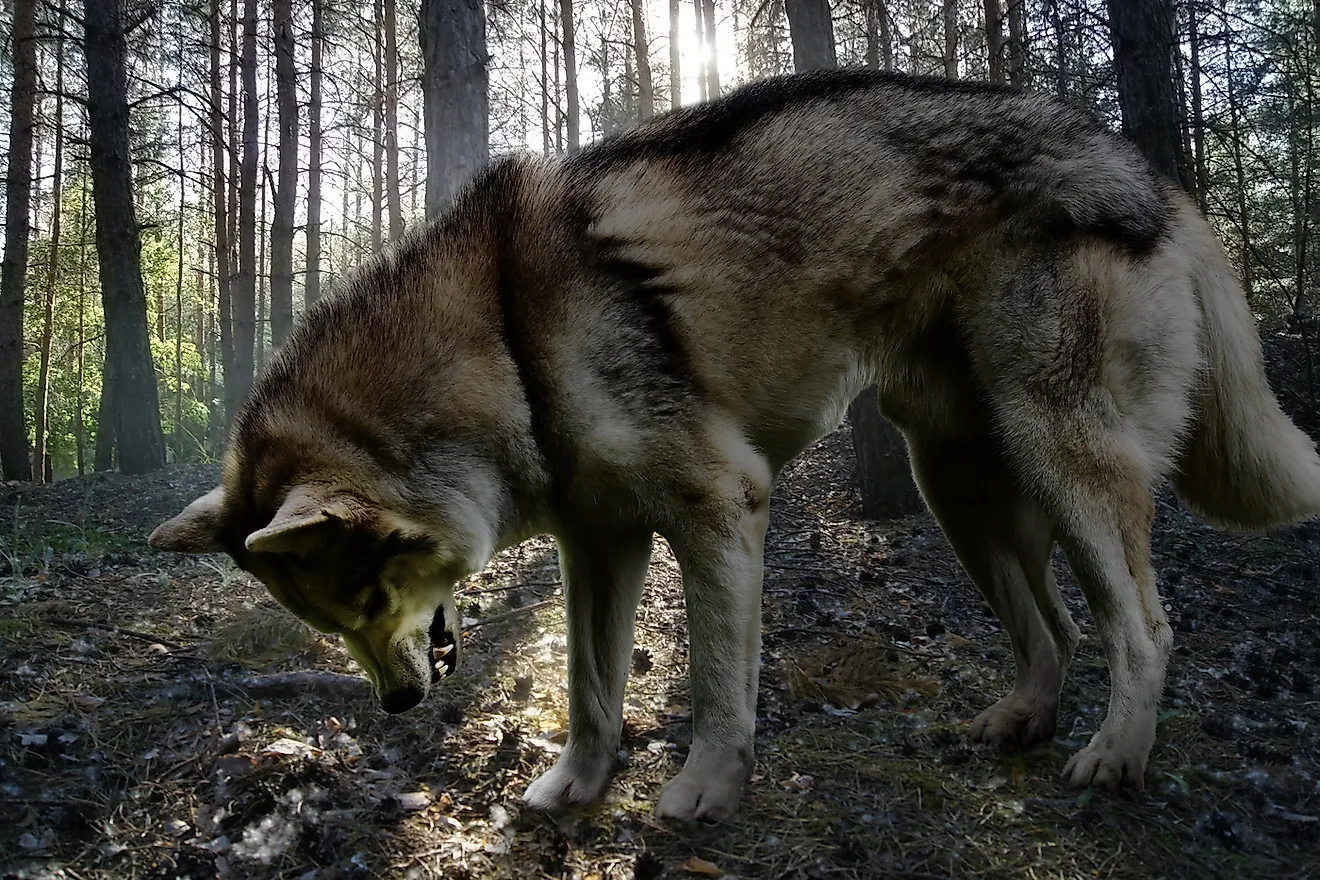
Several species of wolf live in coniferous forests. The Eurasian wolf is a cannibal subspecies found beyond Europe and Asia. While its population has macerated at different points in history, conservation efforts in its home countries have ensured the animals can thrive and its numbers are believed to exist stable. Eurasian wolves form large packs but are often solo hunters.
Tundra wolves are ane of the largest subspecies, constitute in Eurasia from Finland to Kamchatka Peninsula. The tundra wolf, which lives in packs of upward to 20 animals, possesses a territory more than i,000 square miles because its prey is scarce. The wolf is under threat and hunted for its fur.
The gray wolf, or timber wolf, lives in many dissimilar environments but is often found in coniferous forest regions. They are three feet alpine and can abound to between three and five anxiety in length. Its long hair helps repel moisture from the air, keeping the wolf warm and insulated during libation months.
At the top of the food chain, the timber wolf has no natural enemies and enjoys a stable population in Canada and Alaska, though they are considered an endangered species in most of North America.
half-dozen. Cherry Fob
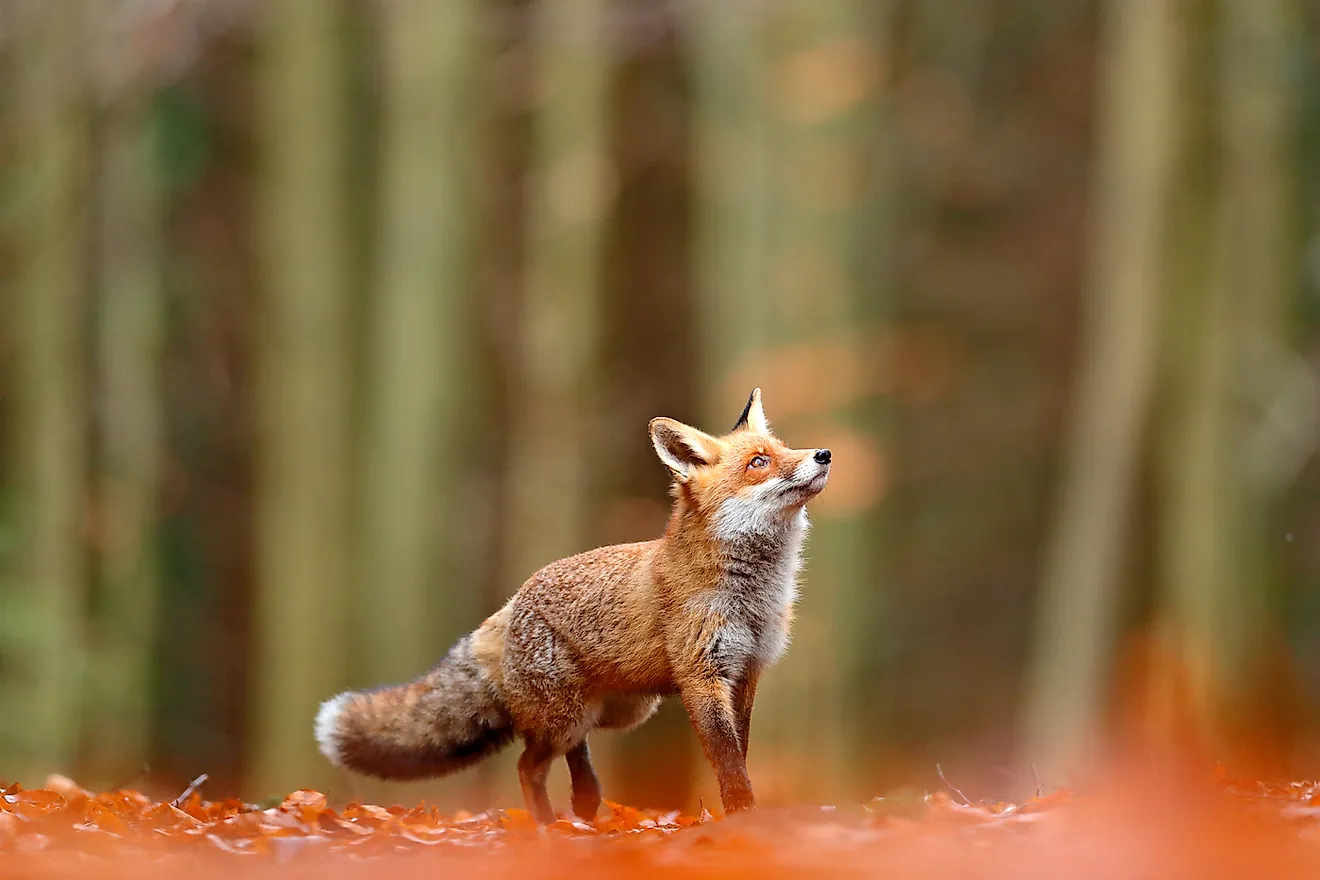
The red fox is nocturnal, hunting at night for rodents, rabbits, birds, and other samll game. The flim-flam is not picky and will adjust its nutrition to accommodate its habitat, also eating fruit, vegetables, fish, frogs, worms and - when living among humans - even garbage and pet food. This adaptability and resourcefulness has earned the red play tricks a reputation as a cunning and intelligent animate being.
Red foxes are considered nuisances and are often shot because they kill subcontract animals or carry rabies, and they are sometimes hunted for sport, only their population remains stable.
five. Squirrels
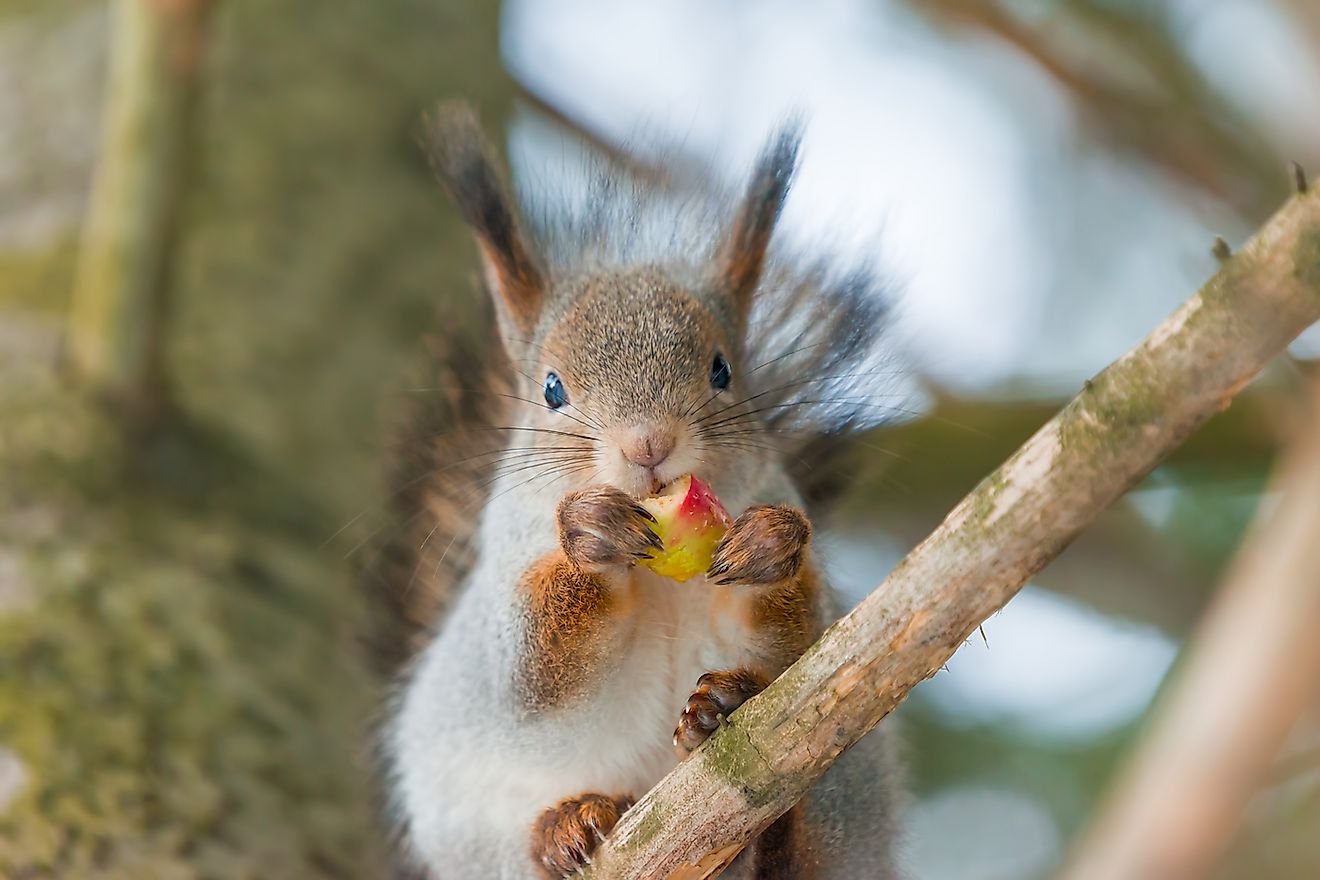
Many types of squirrel are establish in the copse of a coniferous wood, including Abert's squirrels, which typically live in the Rocky Mountains from Arizona to Mexico. They are a dirunal animals, active before sunrise and returning to the nest at sunset, with jaunts out of the nest to forage through the 24-hour interval. They adopt ponderosa pine trees for nesting and while they are non territorial, the animals remain lone through the summer months.
The Douglas squirrel is also a solitary beast found in coniferous forests, which prefers to take up abased nests left behind by woodpeckers or other birds. Like the Abert's squirrel they are diurnal; however, Douglas squirrels are territorial and volition sound a loud, alarming call to ward off other animals.
4. Bobcat
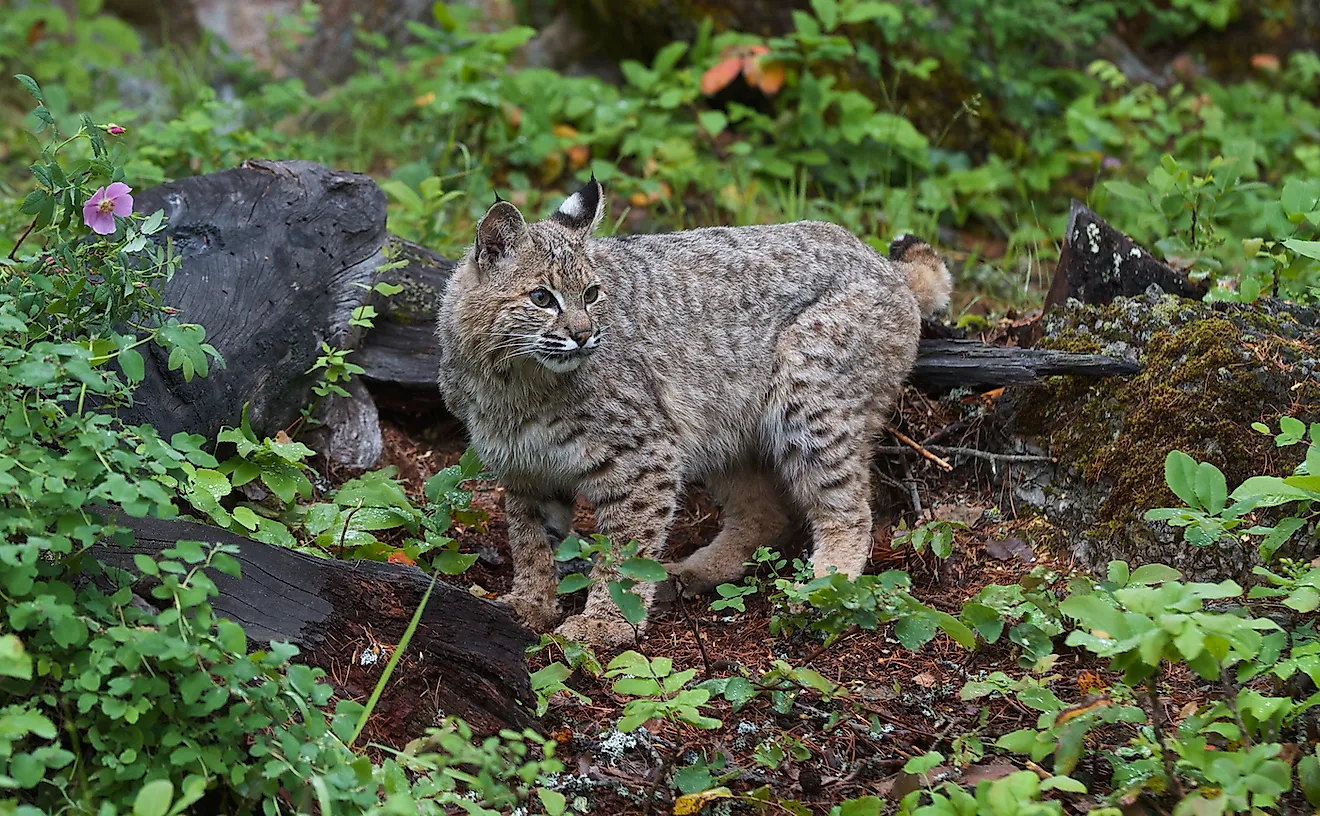
As Northward America's most mutual wildcat, the bobcat is aptly named for its brusk, bobbed tail. The medium-sized true cat is similar to, but smaller than, a lynx and sports a coat that ranges in shades of brown or beige, with spots or lines in black or dark dark-brown. Bobcats live in the woods regions from British Columbia eastward to Nova Scotia in southern Canada, and southwards through virtually of the The states to primal Mexico. They accept been reported in every US state except Delaware.
A nocturnal animate being, the bobcat is a nocturnal hunter, finding most of its prey during dawn and dusk. The cats mainly eat snowshoe hares in the n and cottontail rabbits in the south, every bit well equally rodents, birds, and bats. Males are besides known to hunt deer and other larger animals when smaller prey is scarce.
3. Bald Eagle
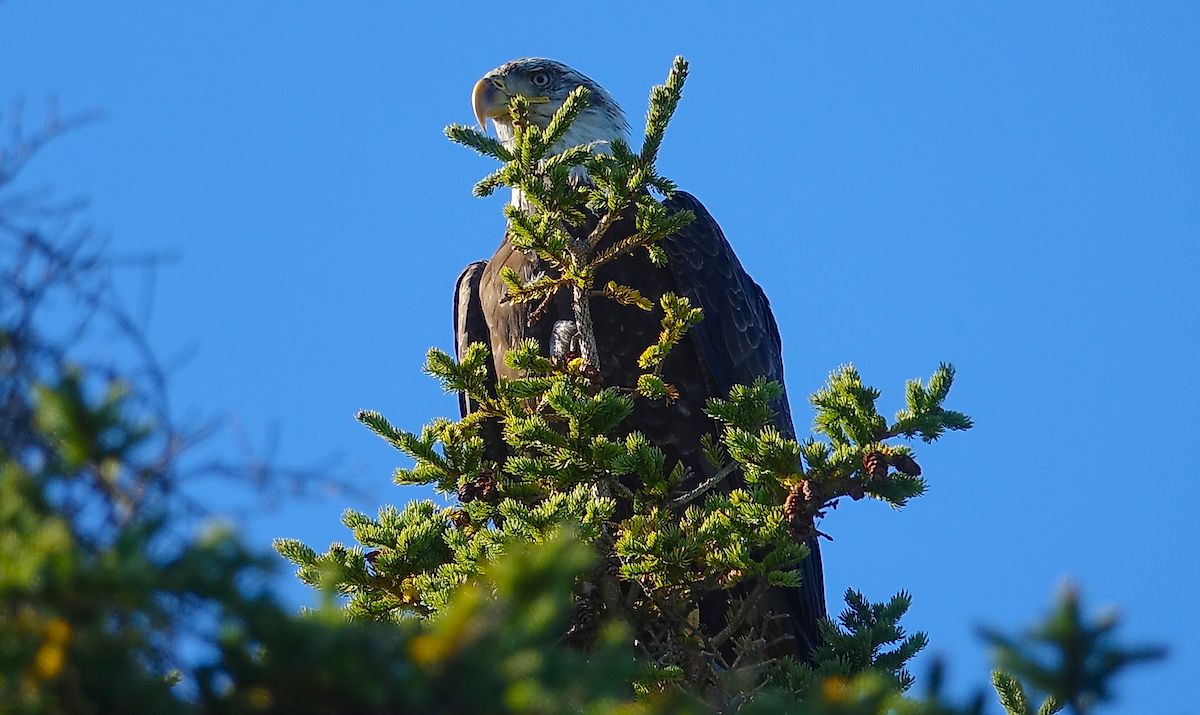
Known equally the symbol of America, the blad eagle is ane of the few omnivorous birds in the coniferous woods, living off of berries, buts, worms, and small rodents or fish. They typically nest in forested areas plant side by side to big bodies of water and stay away from heavily-developed regions.
The bald eagle is tolerant of human action and has adapted to take advantage of some evolution, congregating near fish-processing plants, dumps, and below dams where fish are constitute in high populations.
Their preferred perch is in tall, mature trees offering a wide view and easy flight admission. The bald eagle is a powerful flier, capable of soaring over long distances.
Numbers of the bald eagle are considered a success of conservation efforts, increasing from 1966 to 2015. The bird was listed for protection as an endangered species in 1978 and since 1980, human behavior - including the banning of its highest pesticide threat, Ddt - has allowed the bird'due south population to grow. Past 2007, the recovery prompted the hawkeye'southward removal from the endangered species list.
2. Moose
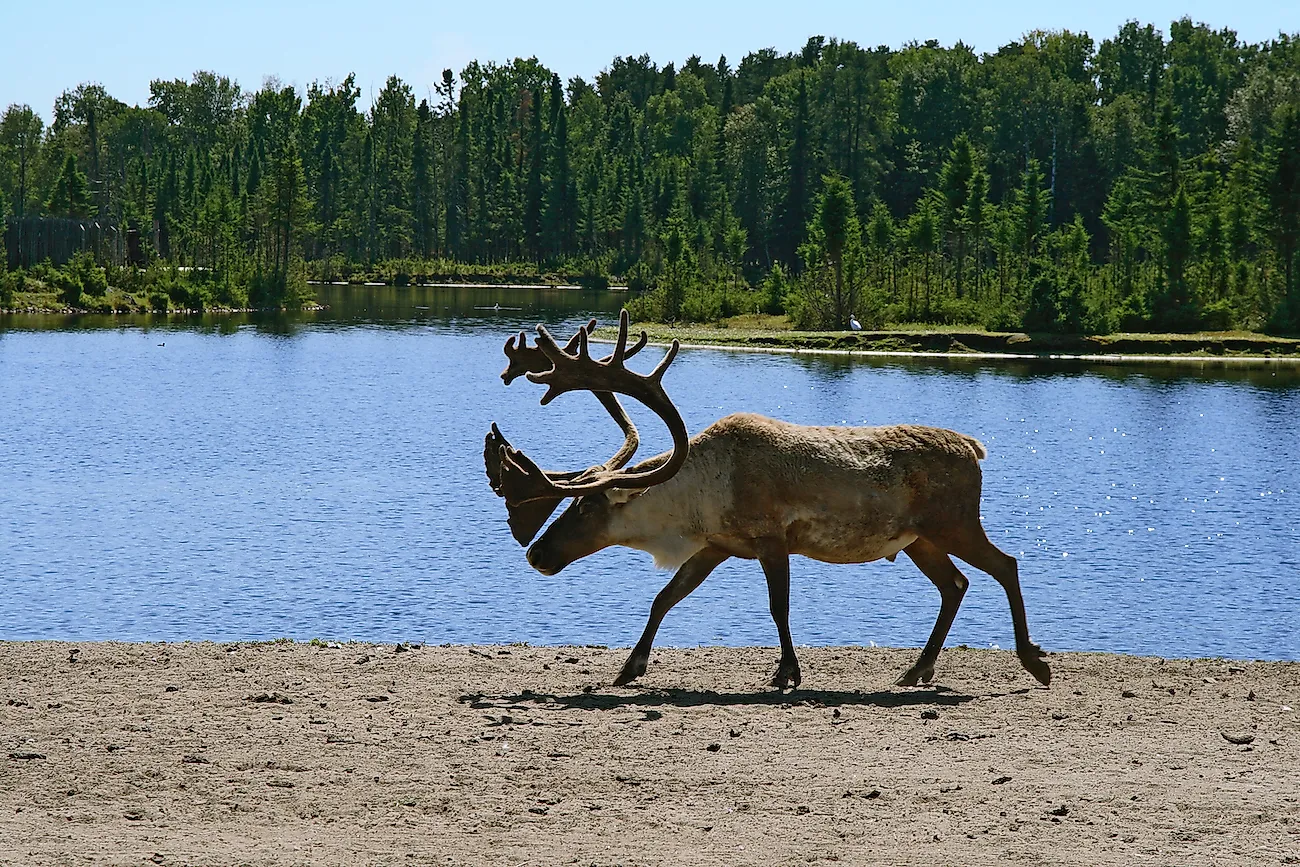
An iconic creature of northwestern regions of North America, the moose is commonly institute in confierous forest areas. Moose are the largest members of the deer family unit and i of the largest land mammals on the continent, standing as alpine as 7.5 anxiety with an average weight of most 1,000 pounds.
The antlers of the male Alaskan moose are the largest of any brute in the deer family with a span of upwards to six.5 feet from tip to tip. The antlers are shed in the fall and early winter, at the cease of breeding, and in the jump male moose will grow a new set of antlers, typically bigger than the previous yr. A moose'south antlers are used for protection and fighting either in defence or during the estrus, when bulls will fight over mating rights. Sometimes the antlers of two males may become locked and the pair will starve to expiry, equally they are unable to forage or drink h2o.
Most moose are herbivores, favoring twigs, bark, roots, and the shoots of woody plants, and they tend to prefer willows and aspens. During summer, moose will feed on aquatic plants like water lilies, pondweed, horsetails, and bladdworts.
1. Black Carry
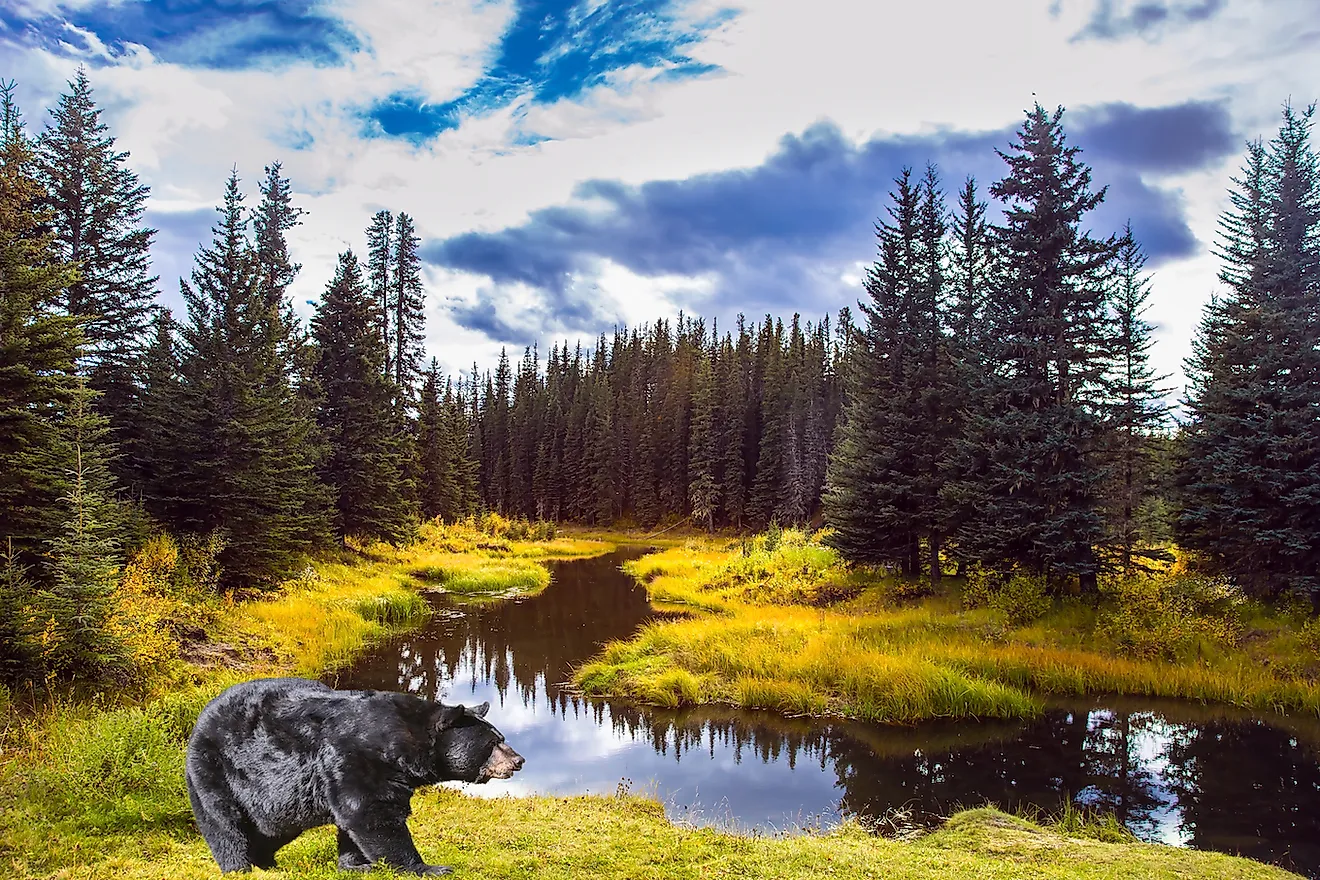
The black comport, an omnivore, lives in the coniferous wood and is known as the smallest and most widely-distributed bear species in North America. Similar the grizzly, the black bear feasts mainly on berries and salmon through the summer in gild to sustain its hibernation, and though information technology lives in a forested area the bear will sometimes leave its habitat in search of nutrient. Interactions with humans are mutual as the black acquit will exist attracted to immediate sources of food found in garbage cans or camping areas.
Blackness bears are considered a least-business concern species due to their big, widespread population, which is estimated to be twice that of all other bear species combined. It is one of ii species non considered threatened with extinction or endangered, forth with the brown behave.
Depending on winter weather, black bears generally hide for three to viii months. Sometimes the bears will hibernate for weeks at a fourth dimension, waking to forage and then settling dorsum into their dens, especially where winter is mild.
Animals In Northwestern Coniferous Forest,
Source: https://www.worldatlas.com/articles/10-animals-that-live-in-coniferous-forests.html
Posted by: gatewoodbeed1961.blogspot.com


0 Response to "Animals In Northwestern Coniferous Forest"
Post a Comment